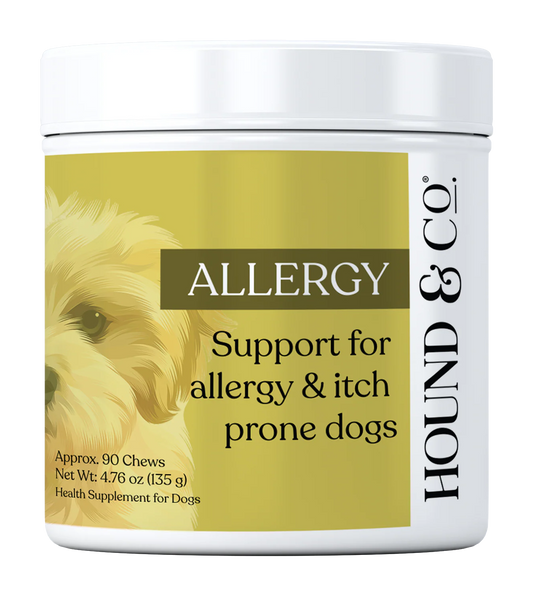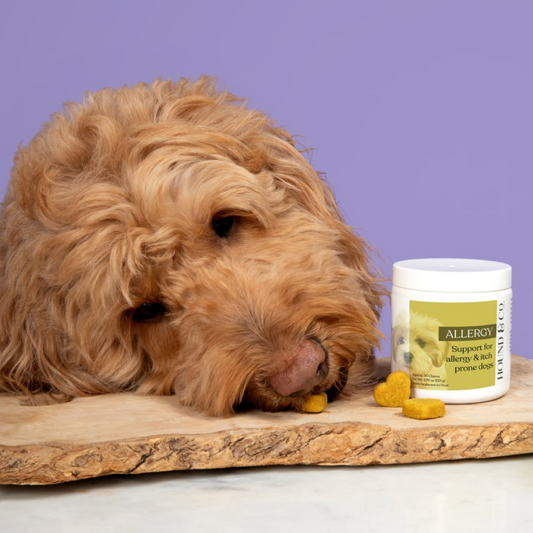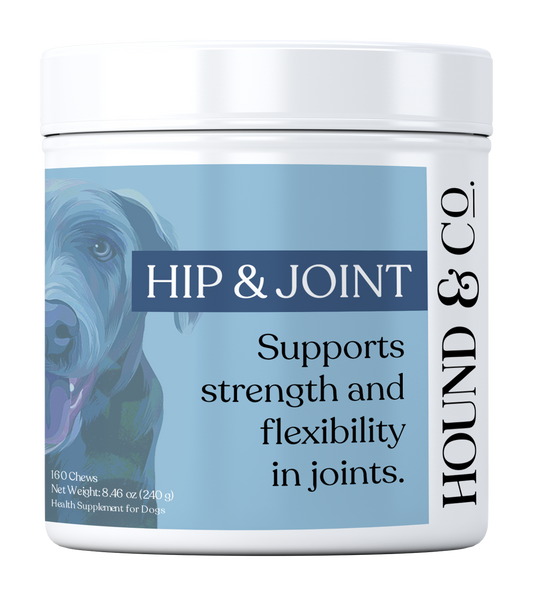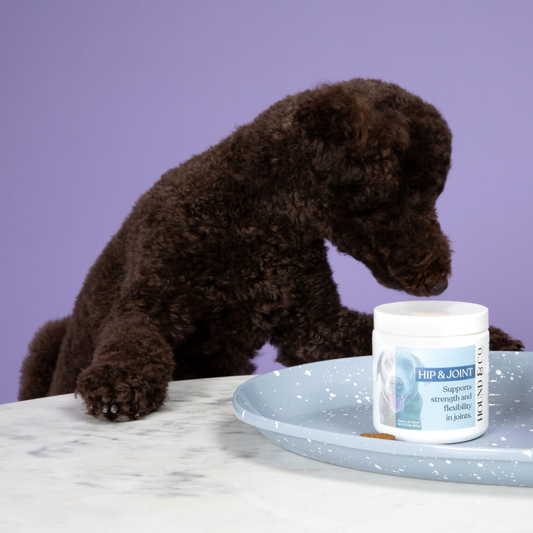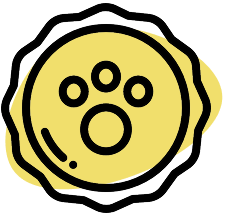Stop the Lick Cycle: How to Break the Habit That’s Hurting Your Dog

Vet Reviewed by Dr. Jacob Klos, DVM

It starts with a scratch, then a nibble, then a lick. Before you know it, your dog is obsessively licking one spot—day in, day out—until the fur is gone and the skin underneath is red, raw, or even infected.
Chronic licking isn’t just annoying—it can signal deeper issues with your dog’s skin, gut, or stress levels. Here’s how to identify what’s causing it and what you can do to stop it before it causes lasting harm.
Why Dogs Lick (And When It Becomes a Problem)
All dogs lick. But when it turns into an obsessive routine—especially targeting paws, legs, belly, or tail base—it’s a red flag.
Common causes of chronic licking include:
- Allergies: Environmental allergens (like grass or pollen), food sensitivities, or dust mites can trigger skin inflammation and itching.
- Digestive issues: An imbalanced gut can show up through skin symptoms like licking, hotspots, and recurring rashes.
- Anxiety or boredom: Dogs may lick as a self-soothing behavior, especially if they’re left alone for long periods.
- Pain: Joint issues or hidden injuries can cause dogs to lick an area repeatedly.
The problem? Even after the root cause is gone, licking can become a habit—and habits are hard to break.
What Chronic Licking Can Lead To
When left unchecked, repetitive licking can cause:
- Hot spots (moist dermatitis)
- Open sores and secondary infections
- Thickened or discolored skin
- Loss of fur and scarring
It’s a cycle that worsens over time: irritation causes licking → licking causes damage → damage increases irritation.
How to Break the Lick Cycle
To stop chronic licking, you need a two-part strategy: reduce the behavior and address the underlying cause. Here's how to start:
1. Identify the Trigger
Does the licking happen after walks? After meals? When they’re left alone? Keeping a symptom diary can help you and your vet pinpoint the source.
2. Improve Gut Health
The gut and skin are closely linked. Imbalances in digestion often show up on the skin. Consider adding a high-quality probiotic to support healthy inflammation response and nutrient absorption.
👉 Try Our Probiotic Digestion Chews — formulated with pumpkin, ginger, and live cultures to support gut health from the inside out.
3. Support the Skin Barrier
Inflamed, itchy skin is often the root of the issue. Supplements with omega-3s, turmeric, and other anti-inflammatory ingredients can help calm irritation and support skin regeneration.
👉 Shop Our Skin & Coat + Allergy Chews — designed to soothe itchy skin and promote a healthy coat using salmon oil, evening primrose oil, and turmeric.
4. Redirect the Behavior
When you see your dog licking, try redirecting them with a toy, puzzle feeder, or playtime. The goal is to break the pattern and rewire the habit.
5. Talk to Your Vet
Especially if sores or infections have developed, you’ll want to make sure your dog gets treatment. Your vet can recommend topical creams, allergy testing, or dietary trials based on your dog’s symptoms.
Consistency Is Key
Just like scratching or chewing, licking becomes easier to manage when you tackle it early and stay consistent. With the right combo of care, supplements, and behavior tools, your dog’s skin can heal—and the urge to lick will start to fade.
If your pup is stuck in the lick cycle, it’s time to intervene. Their skin (and your sanity) will thank you.



